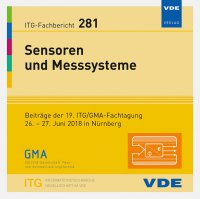Sensitivity of Flexible Pressure Sensors Mounted on Curved Surfaces
Conference: Sensoren und Messsysteme - 19. ITG/GMA-Fachtagung
06/26/2018 - 06/27/2018 at Nürnberg, Deutschland
Proceedings: Sensoren und Messsysteme
Pages: 4Language: englishTyp: PDF
Personal VDE Members are entitled to a 10% discount on this title
Authors:
Tintelott, M.; Graebner, D.; Lang, W.; Dumstorff, G.; Lucklum, F. (University of Bremen, Institute for Microsensors, -actuators, -systems (IMSAS), Bremen, Germany)
Abstract:
In this paper we present the difference in sensitivity of flexible pressure sensors mounted on curved surfaces. The sensor is fabricated by screen-printing high conductive electrodes on a flexible Mylar foil. After curing a pressure sensitive sensing layer is printed on top. Pressure sensitivity is achieved by the displacement of carbon particles in a polymer matrix. We investigated the difference in sensitivity caused by mounting the sensor on a curved surface compared to a reference measurement when mounted on a flat surface. By elongation of the sensing area, the relative resistance change DeltaR/R increases from −0.11% bar-1 to −0.32% bar-1. By contrast, the sensitivity of a compressed sensor area decreases to −0.09% bar-1. The sensitivity of screen-printed pressure sensors is depending on the filler content of the sensing area. Between the particles quantum tunnelling takes place, thus the distance between the particles is determining the linearity and the sensitivity of the sensor. Sensors with high sensitivity have a non-linear sensor response and sensors with lower sensitivity have a linear sensor response. The sensitivity of the presented sensor is depending on the distance between the filler. Higher distance leads to higher sensitivity thus elongation of the sensing area will increase the sensitivity of the device.


